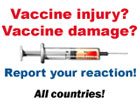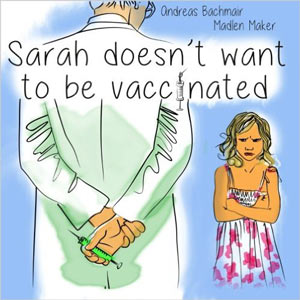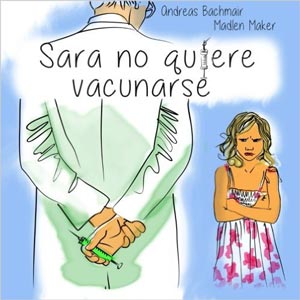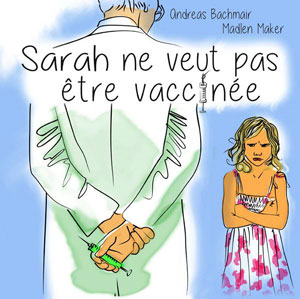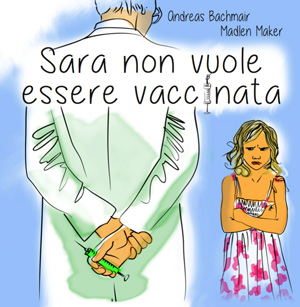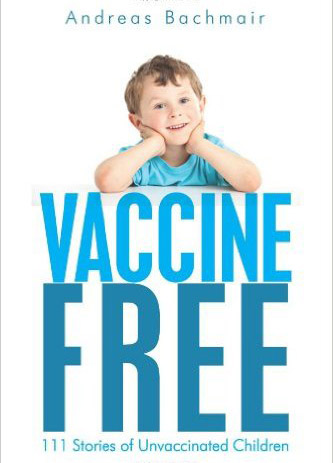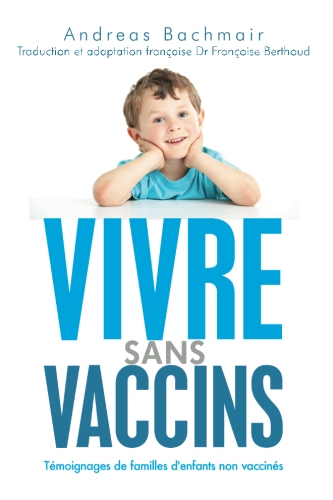Diseases and Vaccinations
in this chapter you can find detailed descriptions of diseases, pathogens, therapy and complications, as well as detailed description of the vaccination, immunity and adverse side effects.
Grippeprophylaxe
"Was kann man gegen die Grippe und Influenza vorbeugend tun?", ist eine häufig gestellte Frage in der Praxis.
Man sollte vor allem auf eine vitalstoffreiche Ernährung und Bewegung an der frischen Luft achten. Der Aufenthalt in beheizten Räumen trocknet die Schleimhäute aus und damit wird unsere erste Abwehrbarriere gegen Bakterien und Viren geschwächt.
Vitamin D
Ein wesentlicher Punkt im Winter ist die Bewegung an frischer Luft und der Sonne. Sonneneinstrahlung fördert die Umwandlung von Vitamin D im Organismus, das für die Funktion des Abwehrsystems einen entscheidender Faktor darstellt(Reifung und Bildung der T-Lymphozyten) . Dies ist auch der Grund dafür, warum die Influenzaaktivität immer im Winter ihren Höhepunkt erreicht, in einer Zeit also, in der man relativ wenig an der Sonne ist und die eigene Vitamin D Produktion auf einen Tiefstand angelangt ist. Was macht man aber , wenn die Sonne nicht scheint? Früher gab man Kindern als Vitamin D (und Vitamin A) Prophylaxe Lebertran. Lebertran enthält auch relativ viel Vitamin D, ist aber nicht jedermanns Sache (was den Geschmack angeht). Sie können sich in der Apotheke Lebertran , lateinisch Oleum jecoris besorgen. Wer es einfacher haben möchte, besorgt sich Vitamin D Nahrungsergänzungsmittel. Hierbei handelt es sich um die Form Vitamin D3, die vom Körper nicht mehr in die aktive Form durch Sonneneinstrahlung umgewandelt werden muss.
Ein günstiges Monopräparat mit Vitamin D3 bietet z.B. Fairvital an: Vitamin D3 500 i.E . Eine Kapsel deckt den Tagesbedarf an Vitamin D (500 i.E.). Die Einnahme-Menge kann aber auch gesteigert werden, da der Körper z.B. bei intensiver Sonneneinstrahlung ein Vielfaches von 500 i.E. selber produziert.

Vitamin C
Vitamin C steht in eingen Zusammmenhang mit unserem Abwehrsystem. Der Gehalt an Vitamin Cin den weissen Blutkörperchen (Leukozyten) ist etwa 10-40 höher als im Blut, es steigert deren Aktivität und Beweglichkeit.
Wissenschaftliche Forschungsergebnisse haben gezeigt, daß die Aufnahme höherer Dosen Vitamin C zur Erzeugung einer größeren Zahl von Antikörpermolekülen führt, vor allem der Typen IgG und IgM (Vallance S.: Relationships between ascorbic acid and serum proteins of the Immune system. British Med. J. 1977; 2: 437-438, Prinz W., Bortz R., Bragin B., Hersch M.: The effect of ascorbic acid supplementation on some parameters of the human immunological defence system. International Journal of Vitamin and Nutrition Research 1977; 47:248-256).
Bei Infekten sinkt der Ascorbingehalt in den Leukozyten rasch ab und sollte durch hohe Gaben von Vitamin C ersetzt werden. Eine tägliche Dosis von 250 mg Ascorbinsäure (bereits das 2.5 fache der empfohlenen Tagesmenge) genügt jedoch nicht nicht, den Spiegel in den Leukozyten so hoch zu halten, wie dies für eine wirksame Phagozytose notwendig ist. Eine bereits vor über 30 Jahren durchgeführte Studie kommt zu dem Schluss, dass 1 g täglich plus 6 g täglich zu Beginn einer Erkältung genügen, um diesen wichtigen Schutzmechanismus funktionsfähig zu erhalten (Hume R., Weyers E.: Changes in leucocyte ascorbic acid during the common cold. Scottish Medical Journal 1973; 18:3-7).
Vitamin C gibt es in verschiedenen Darreichungsformen und Mengen. Hier eine kleine Auswahl:Acerola C-500, Vitamin C 1000mg mit Hagebutten, Ester C Komplex, Quercetin plus C, Gepuffertes Vitamin C.
Oder hier im Shop unter Vitamine: Vitamin C 1000mg.



Zink
Zink ist Bestandteil von Lymphozten und wird während körperlichem Stress (Infekten!) in relativ grossen Mengen (20-50mg) ausgeschieden. Diese Menge sollte daher wieder ersetzt werden. Da nur sehr wenige Lebensmittel hohe Mengen an Zink erhalte, ist eine Einnahme von Zink in Form eines Nahrungsergänzungsmittel in diser Zeit besonders empfehlenswert.
Im Shop finden Sie zum Beispiel Zink Asporotat, eine besonders gut aufnehmbare Form oder Zink Picolinat von Fairvital.
Swine flu vaccinations (H1N1 vaccines)
The new pandemic vaccines against H1N1 contain very problematic materials such as thimerosal and squalen.
Thiomersal
Thimerosal is a mercury compound which is used to conserve vaccines as it is already effective in very small doses. Thimerosal has a strong neurotoxic effect, i.e. it can damage the nervous system. Thimerosal is particularly problematic during the embryonic and fetal phase and during the first years after the child is born. Thimerosal is suspected of triggering autism, Asperger Syndrome and other neurological developmental complications.
The only lapidary comment the European Medication Agency provided was that there is no connection between neurological developmental complications and thiomersal in vaccines. However, the development of mercury free vaccines should be pursued, also for ecological reasons. EMEA emphasized that the advantage of vaccinations far outweighs the theoretical risks of thimerosal.
Thiomersal was banned as a hand disinfection agent decades ago due to its neurotoxicity, but ist use in vaccines poses no danger, according to EMEA ?
Part of the swine flu vaccines also contain thimerosal. This is the target group of the vaccination:
- Medical staff
- Pregnant women!!!
- Babies older than 6 months who have chronic diseases
- Healthy adults between the ages of 15 and 49
- Healthy children
- Healthy adults between the ages of 50 and 64
- Healthy adults older than 65
Primarily pregnant women and babies will be especially affected by the neurotoxic effect of thimerosal.
Mercury from thimerosal is metabolized in ethyl mercury and even though the half life of ethyl mercury is 7-10 days and thus relatively short, mercury that has penetrated the brain is virtually impossible to remove again.
Because humans ingest mercury through the food chain – mainly consumption of fish – in terms of the imperative to minimize it is even more important that vaccines do not add toxic and carcinogenic mercury.
You will find an interesting film about the influence of mercury on the nervous cells which was made by the
Squalen
Squalen is a new kind of compound which is used in Novartis’s and GlaxoSmithKline’s H1N1 vaccines to increase the effect. Squalen magnifies the immune response and at the same time reduces the amount of the viral antigen which is required for the vaccination. It makes it possible to produce more vaccines. The name Novartis uses for the additive is MF59, Glaxo refers to it as AS03.
Squalene and animal experiments
A trial published in 2000 in the American Journal of Pathology showed that one single injection of Squalene in rats caused chronic inflammation of the joints in rats, also referred to as rheumatoid arthritis. (Carlson, B.C. et al.: The endogenous adjuvant squalene can induce a chronic T-cell mediated arthritis in rats. American Journal of Pathology 2000, 156: 2057- 2065 )
Squalene in humans
Squalene is an interim product in the biosynthesis of cholesterol and appears mainly in the nerve system and in the brain in the human organism. Injecting Squalene into the body sometimes triggers an auto immunological reaction, whereby the immune system recognizes squalene, which is produced naturally in the body, as being “foreign“ matter, and destroys it. In the meantime research on auto-immune processes treats it as a given that hydrocarbon, as also represented by squalene, can result in an increased antibody formation of the B-lymphocyte system and also to a greater immune reaction of the T-cell system. (O'Hagan D.T.: MF59 is a safe and potent vaccine adjuvant that enhances protection against influenza virus infection. Expert Rev Vaccines. 2007 Oct;6(5):699-710.). These uncontrollable immune responses conceal an immense danger of auto-immunity and thus of auto-immune diseases (M. Satoh et.al.: Induction of lupus autoantibodies by adjuvants. J Autoimmun. 2003 Aug;21(1):1-9.).
The assumption is that the Gulf War Syndrome (GWS)) was caused by an anthrax vaccine which contained Squalene (MF 59). In 100% of GWS patients who were vaccinated for the first Gulf war one finds antibodies against squalene. Gulf war veterans who did not show any symptoms of GWS also do not have any antibodies (0%) against squalene. (Pamela B. Asa,1 Yan Cao, and Robert F. Garry:Antibodies to Squalene in Gulf War Syndrome Experimental and Molecular Pathology 68, 55–64 (2000)doi:10.1006/exmp.1999.2295)
GWS symptoms include the following: fatigue, rashes, headaches, joint pain, muscle pain, swelling of the lymph nodes, diarrhea, loss of memory, auto-immune diseases and neurological diseases.
Furthermore in this context it is more than alarming that the incidence of amyotrophic lateral sclerosis was significantly higher in military personnel that had participated in the Gulf war and for this reason had received multiple vaccinations with squalene. (Horner, R.D. et al.: Occurrence of amyotrophic lateral sklerosis among Gulf war veterans. Neurology, 2003 Sep 23;61(6):742-9.)
You can find yet another confirmation in the manual "Infection and Autoimmunity" (Yehuda Shoenfeld and Noel R. Rose (Ed): Infection and Autoimmunity. Elsevier 2005, ISBN: 978-0-444-51271-0) on page 87 "Induction of Autoimmunity by Adjuvant Hydrocarbons" by K.M. Kelly et.al.(Kelly, K.M., et.al.: Induction of Autoimmunity by Adjuvant Hydrocarbons in: Yehuda Shoenfeld and Noel R. Rose (Ed): Infection and Autoimmunity. , Elsevier 2005, ISBN: 978-0-444-51271-0 pp.87-104 ):
More recently, it has become clear that other hydrocarbons, notably the mineral oil Bayol F and the endogenous hydrocarbon Squalen, also can induce lupus-like disease in mice. ... The induction of murine lupus by immunological adjuvants is significant for two reasons. First, it provides a model for the interaction of environmental triggers with the genetic background in systemic autoimmunity and secondly, it raises the possibility that adjuvant hydrocarbons might trigger autoimmune disease in susceptible humans.
What is interesting in this context is to what extent auto-immune diseases occurred in the 39,000 recipients of the vaccine FLUAD which contains Squalen. However, there has never been a follow-up study (which is, perhaps, no coincidence).
The following list contains initial information on the pandemic vaccines against swine flu:
Pandemrix Vaccine
Content: Influenza-virus, inactivated containing an antigen in accordance with the following:
A/California/7/2009 (H1N1) like strain (X-179A) 3.75 microgram**
* bred in eggs
** Haemaglutinin
Additives: AS03 as adjuvants, consisting of squalen (10.69 milligram), DL-a-tocopherol (11.86 milligram) and polysorbate 80 (4.86 milligram) (please refer also to swine flu vaccines)
Other compounds: The vaccine contains 5 microgram thimerosal
After mixing the suspension (antigen) and the emulsion (adjuvants) the vaccine is available in a multi-container bottle.
Injection bottle with suspension:
Polysorbat 80
Octoxynol 10
Thimerosal
Sodium chloride (NaCl)
Sodium monohydrogen phosphate (Na2HPO4)
Sodium dihydrogen phosphate (KH2PO4)
Sodium chloride (KCl)
Magnesium chloride (MgCl2)
Water for injection purposes
Injection bottle with emulsion:
Sodium chloride (NaCl)
Sodium monohydrogen phosphate (Na2HPO4)
Sodium dihydrogen phosphate (KH2PO4)
Potassium chloride (KCl)
Water for injection purposes
For the sample approval a H5N1 virus strain was used which was replaced by the H1N1 strain.
Pandemrix adverse effects:
The reported adverse effects are listed according to the following frequencies:
Very frequent (=1/10)
Frequent (=1/100 to <1/10)
Occasional (=1/1.000 to <1/100)
Rare (=1/10.000 to <1/1.000)
Very rare (<1/10.000)
Diseases of the blood and the lymph system
Frequent: Lymph adenopathia
Psychiatric diseases
Frequent: insomnia
Diseases of the nervous system
Very frequent: headaches
Occasional: Paraesthesia, dazedness, dizziness
Diseases of the gastrointestinal tract
Occasional: Gastrointestinal symptoms (such as diarrhea, vomiting, abdominal pain, nausea)
Diseases of the skin and subcutaneous tissue
Frequent: Bleeding of the skin at the site of injection, more sweat secretion than usual
Occasional: itchiness, skin rash
Diseases of the muscles of the skeleton-, tissue and bones
Very frequent: Arthralgia, myalgia
General diseases and problems at the site of injection
Very frequent: Hardening, pain and redness at the injection site, fever, fatigue
Frequent: Chills, flu-like diseases, reactions at the site of injection (such as heat and itchiness)
Occasional: Nausea
Experiences that users have after market introduction
There is no data that pertains to the use of Pandemrix.
There were reports of the following side effects during the application and after the market introduction of interpandemic (seasonal) trivalent vaccines:
Occasional: General skin reactions including urticaria
Rare: Neuralgia, seizures, temporary thrombocytopenia.
There were reports of allergic reactions which in rare cases led to shock.
Very rare: Vasculitis with temporary renal involvement.
Neurological diseases such as encephalomyelitis, neuritis and Guillain-Barré-Syndrome
Pandemrix contains thimerosal (an organic compound which contains mercury) as a means to conserve. Therefore there can be sensitive reactions.
Conclusion:
Due to the short duration of the trial and the minimal size of the trials the above-mentioned adverse effects are to be taken with extreme caution. Severe rare side effects were not recorded here. Also side effects (mainly autoimmune diseases) due to squalen, which generally do not occur until weeks or months after the vaccination, are missing in the above list.
This preservative is very risky mainly for pregnant women and small children. The effect of thimerosal is neurotoxic and can damage an unborn child.
A rare trial that was conducted by BUND (Mercury Global negative Impact and Endangerment of children’s abilities) contains the following description of mercury:
Recently the leading scientific institution for the investigation of neurological development of children warned that children who were subjected to even minute amounts of mercury could suffer brain drain. According to Professor Philippe Grandjean of Harvard University and the University of South Denmark our society is suffering from a gradual loss of intelligence: Chemicals are reducing the average IQ of our population. The generally irreversible damage for adolescent brains is due to their being subjected to mercury and other toxins which hinder the early development stages in much smaller amounts that hitherto assumed. The population groups that are at greatest risk are newborns, small children and pregnant women. Mercury is particularly poisonous for the developing central nervous system: it is enriched in the human body and is transferred to the fetus during pregnancy. Pregnant women or women who will have children at a later stage can therefore unknowingly subject the fetus to the risk of obtaining serious brain damage. (http://www.env-health.org/IMG/pdf/quecksilber_studie_032007.pdf)
This is another quote from the trial:
„It is a generally accepted fact that a mother’s being subjected to methyl mercury can influence the development of the nervous system of her unborn child. What however is being discussed is the extent of the environmental burden with mercury which has been proven to cause this damage. Over the course of time we have improved technology and we are capable of proving damages at an ever lower level. It is probable that a scientific consensus will be found that there is no dose of mercury that does not endanger a fetus.”
(Peter Orris, MD, MPH, FACP; FACOEM, Professor for Public Health at the University of Illinois in Chicago)
Borderline values for the daily exposure to mercury differ according to each institution. The US National Research Council (NRC) has lower threshold values as the WHO. The NRC lists the threshold value for methyl mercury (a different mercury compound) as being 0.1 µg/kg bodyweight/day, the WHO on the other hand at 0.22 µg/kg bodyweight/day.
This value, however, is for oral consumption. (The oral bioavailability of organ mercury compounds is 50-100%). A threshold value for the application by injection has not been defined yet. However it is presumably much lower.
Daronrix
Complete virus flu vaccine of a pandemic virus strain inactivated which contains an antigen in accordance with:
A/Vietnam/1194/2004 (H5N1)*** 15 microgram**
per vaccine dose (0.5 ml)
* bred in eggs
** Haemaglutinin
*** adjuvanted on aluminum phosphate 0.45 milligram Al3+ and hydratisized an aluminum hydroxide 0.05 milligram Al3+
Other components
Sodium chloride, sodium mono hydrogen phosphate-dodecahydrate, potassium dihydrogen phosphate, potassium chloride, magnesium chloride-hexahydrate, thimerosal (50microgramm), water for injection purposes.
A H5N1 virus strain was initially used for the approval. The official data for the current production have not been presented to us yet. Presumably it is the virus strain:
A/California/7/2009 (H1N1) -like virus
Daronrix side effects
Side effects that were observed in the course of clinical trials with various formulations (H5N1, H2N2 and H9N2)
(N=941) of the model vaccine:
Very frequent (=1/10),
Frequent (=1/100 bis <1/10),
Occasional(=1/1.000 bis <1/100),
Rare (=1/10.000 bis <1/1.000),
Very rare (<1/10.000),
Not known (cannot be estimated on the basis of available data).
Infections and parasite diseases
Occasional: Nasopharyngitis, rhinitis
Diseases of the nervous system
Very frequent: headache
Diseases of the skin and subcutaneous tissue
Frequent: profuse sweating, bleeding of the skin
Skeleton muscles, diseases of tissue and bones
Frequent: Myalgia, arthralgia
General diseases and afflictions at the site of injection
Very frequent: Pain and redness at the injection site, fatigue.
Frequent: Swelling and hardening at the injection site, chills, fever
Occasional: Itchiness at the injection site
During the post marketing observation of interpandemic (seasonal), trivalent vaccines the following side effects were reported:
Occasional (=1/1.000 to <1/100):
General skin reactions, including pruritis, urticaria or non-specific rashes.
Please support vaccination-critical information
If you are interested in the work of www.vaccineinjury.info and would like to receive neutral information pertaining to vaccinations in the future, you can support us by donating some money.


